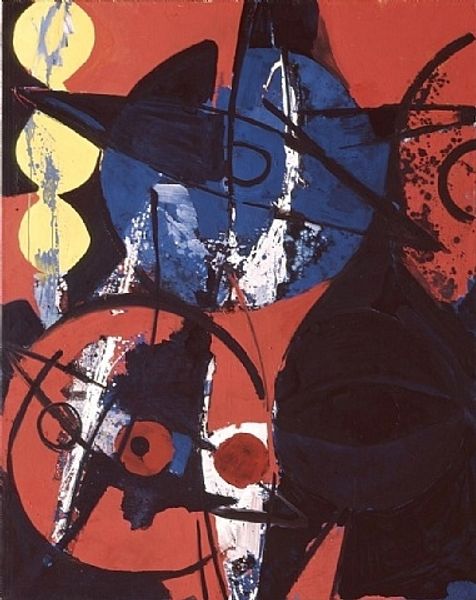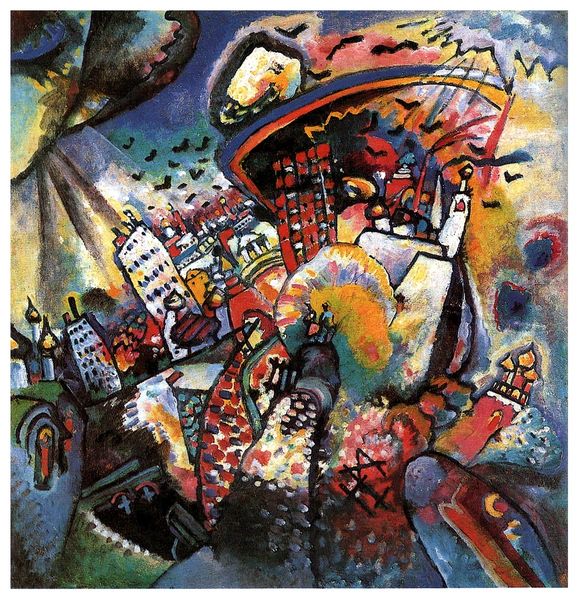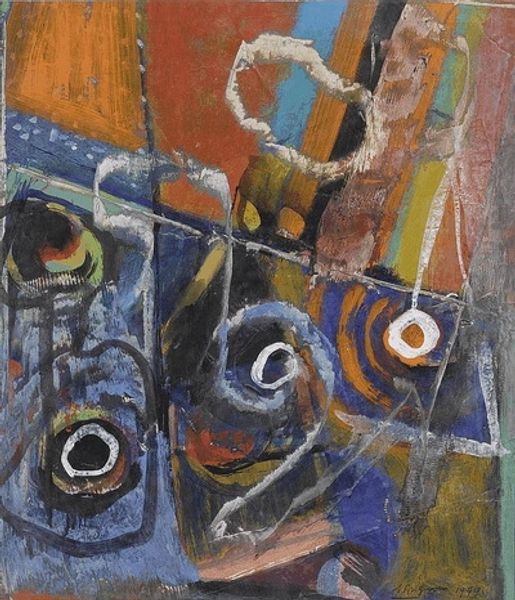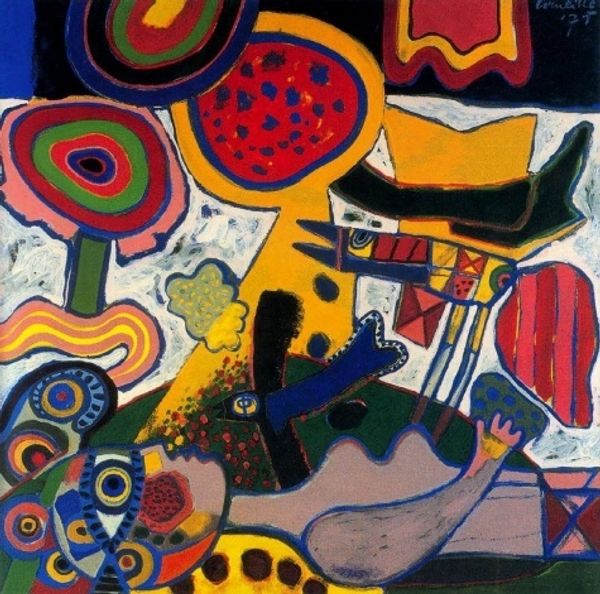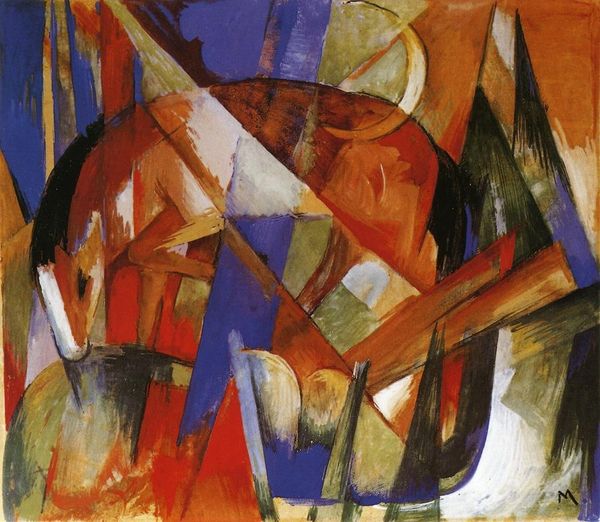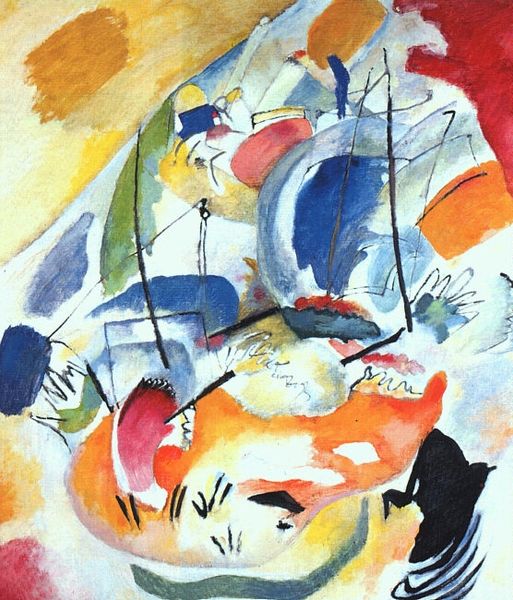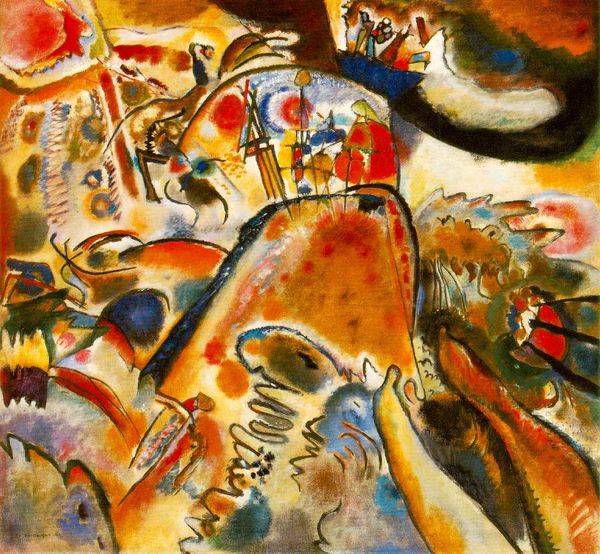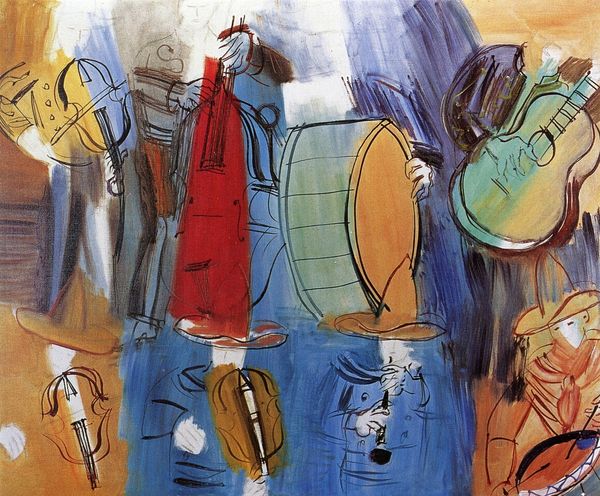
painting, oil-paint
#
cubism
#
art-nouveau
#
painting
#
oil-paint
#
abstract-art
#
musical-instrument
#
modernism
Dimensions: 55 x 45.7 cm
Copyright: Public domain US
Editor: Here we have Raoul Dufy's "The Violin" from 1916, rendered in oil paint. I’m immediately struck by its flattened perspective and the almost jumbled presentation of the objects. The musical instruments seem less like instruments and more like… shapes? What can you tell me about how Dufy uses these materials and objects? Curator: The piece invites us to think about art’s means of production. Dufy's choice of oil on canvas is traditional, yes, but how does he then undermine that tradition? Look at how he dismantles the familiar forms of the violin and the piano. It's not just about representation; it's about deconstructing our understanding of these mass-produced instruments. What do you make of that "Pleyel" inscription? Editor: It almost feels like advertising, but for luxury goods... Curator: Precisely! The “Pleyel” piano wasn’t just any piano. It was a status symbol. Dufy's work becomes a commentary on the commodification of culture and the burgeoning consumerism of the era. And consider the labor involved – the luthiers crafting violins, the factory workers producing pianos. Dufy is making us aware of the material and human costs embedded in these objects we consume. Editor: So, he's not just painting a violin, he's pointing to all the things *around* the violin, the manufacturing, the status it carries, almost a sociological study of these instruments? Curator: Exactly. And it’s the materiality that enables that critique. He's forcing us to confront the systems that give these objects their value, beyond just their aesthetic appeal. What would art be without its production, consumption and circulation? Editor: I hadn’t thought about it that way. It really shifts my perspective on the piece and its connection to the world outside the canvas. Thanks, I’ll remember that next time. Curator: Likewise, I find our discussions useful. Thank you.
Comments
No comments
Be the first to comment and join the conversation on the ultimate creative platform.

